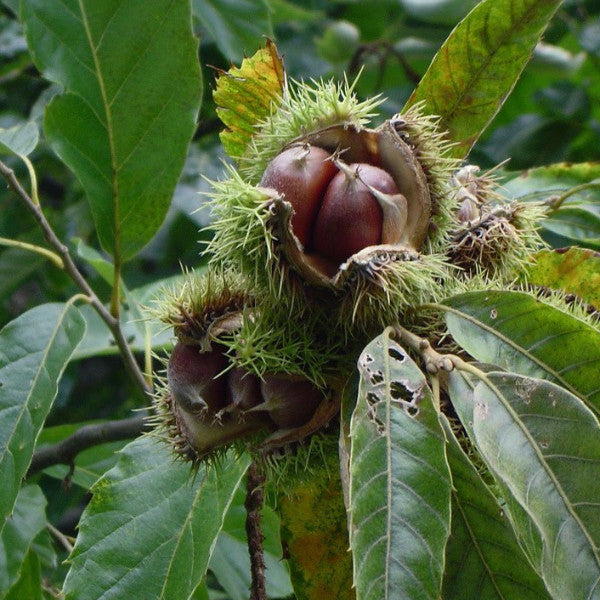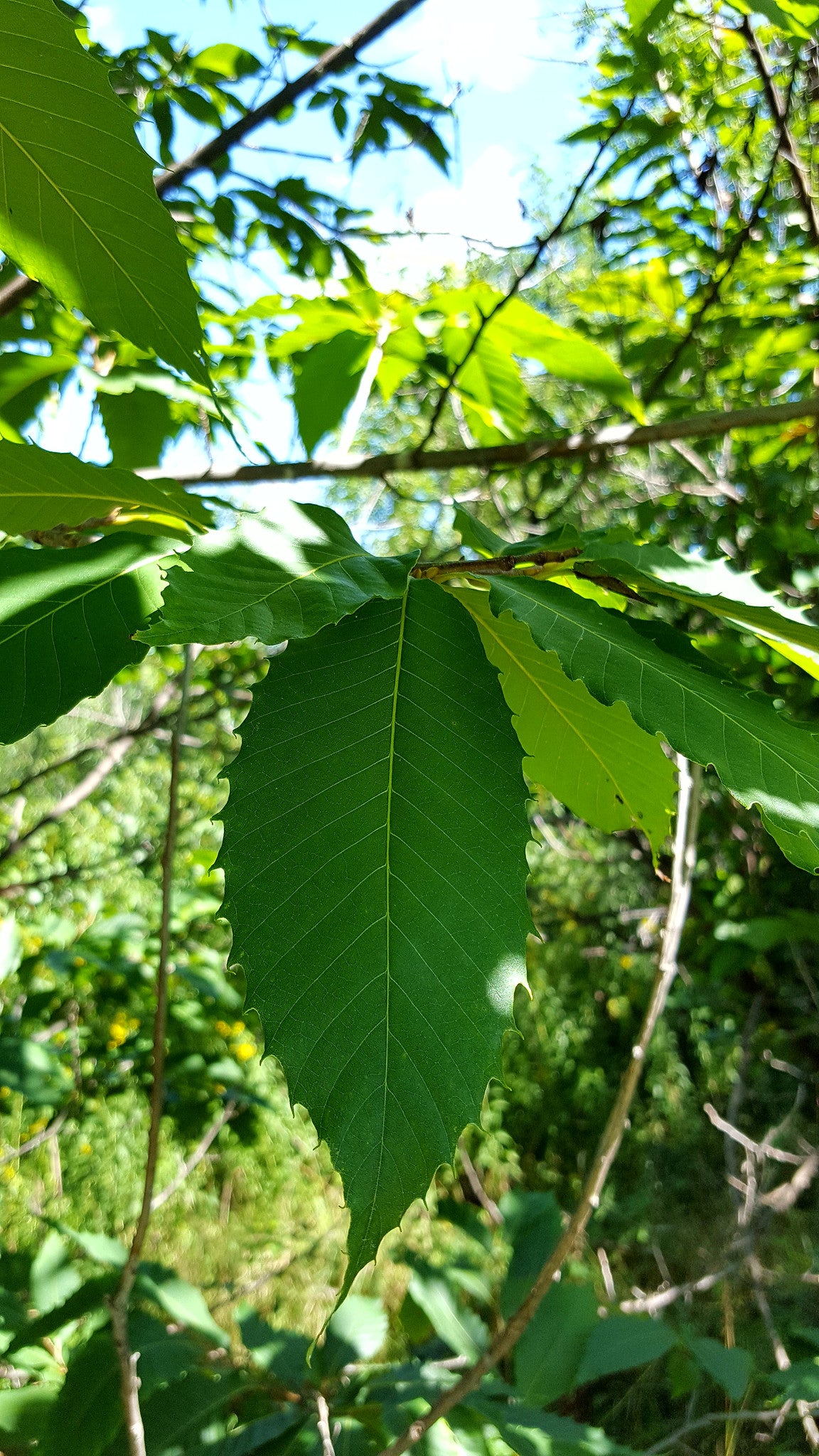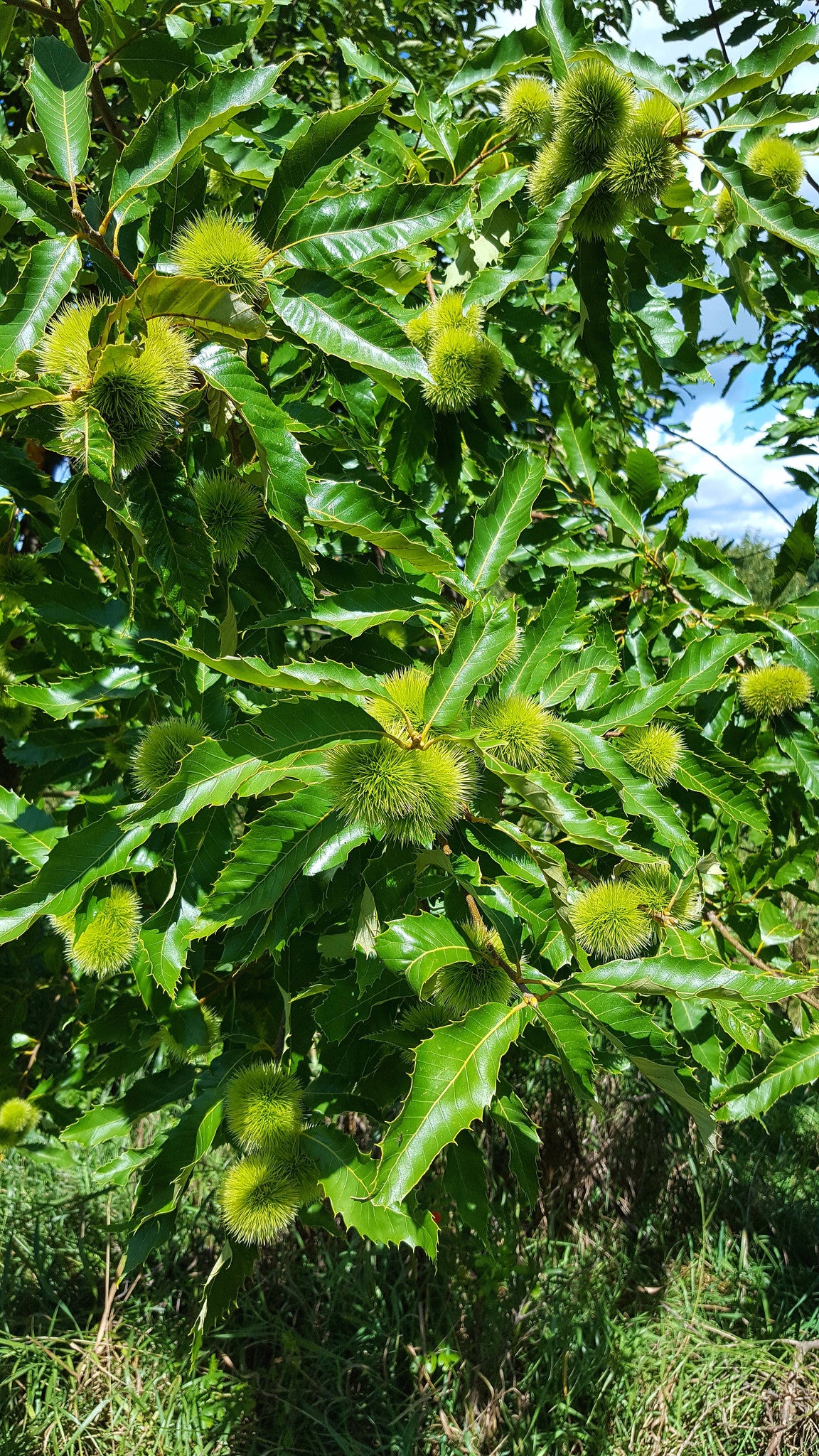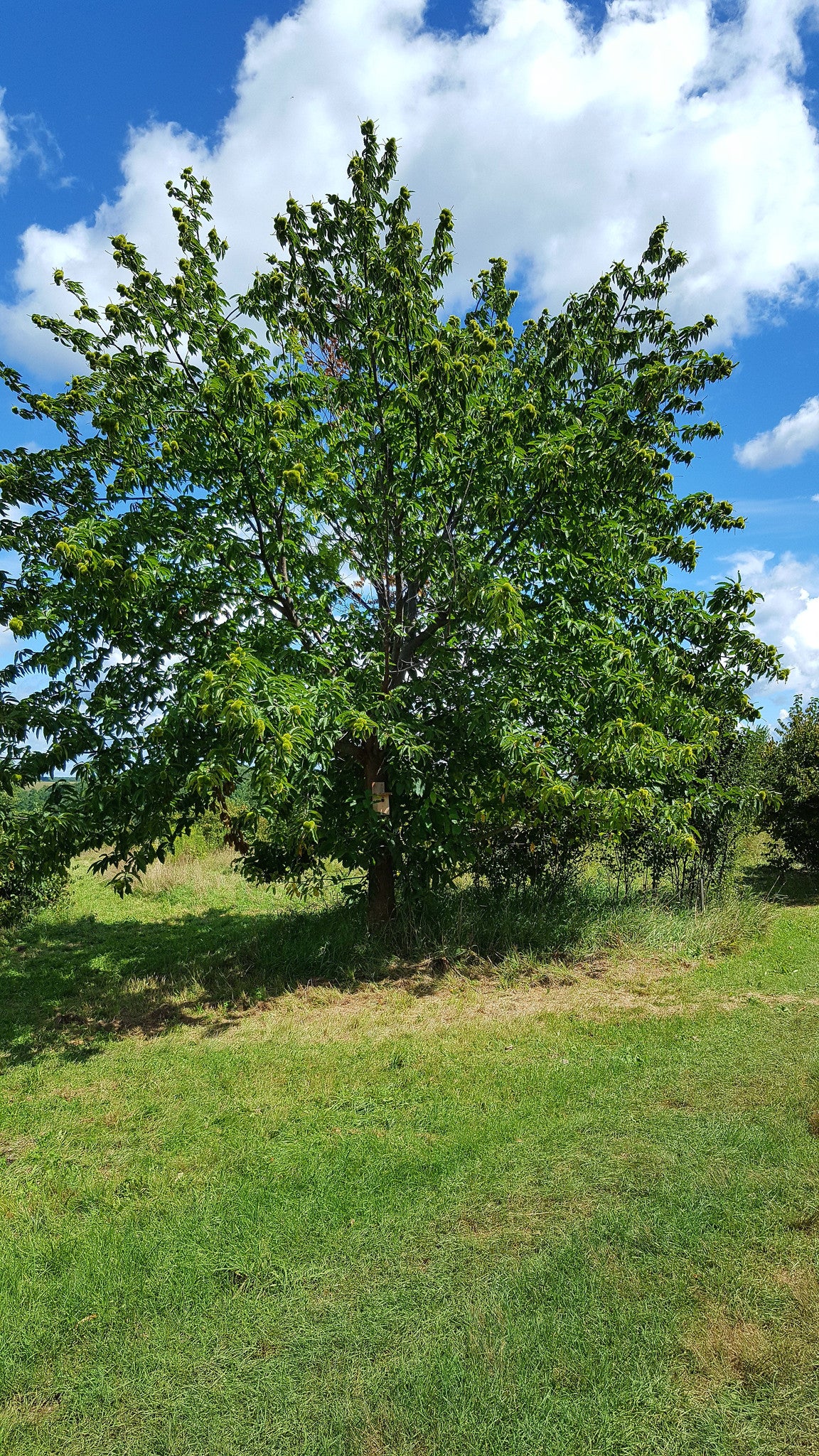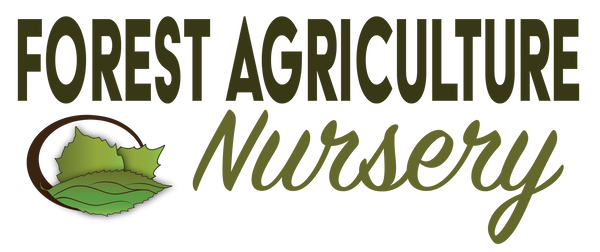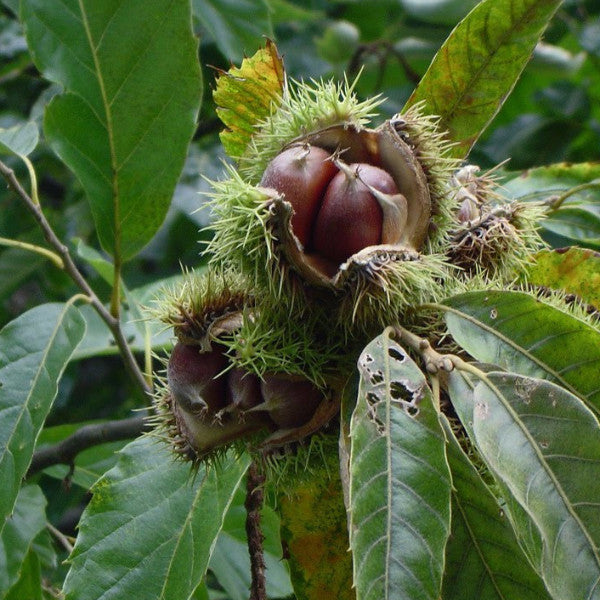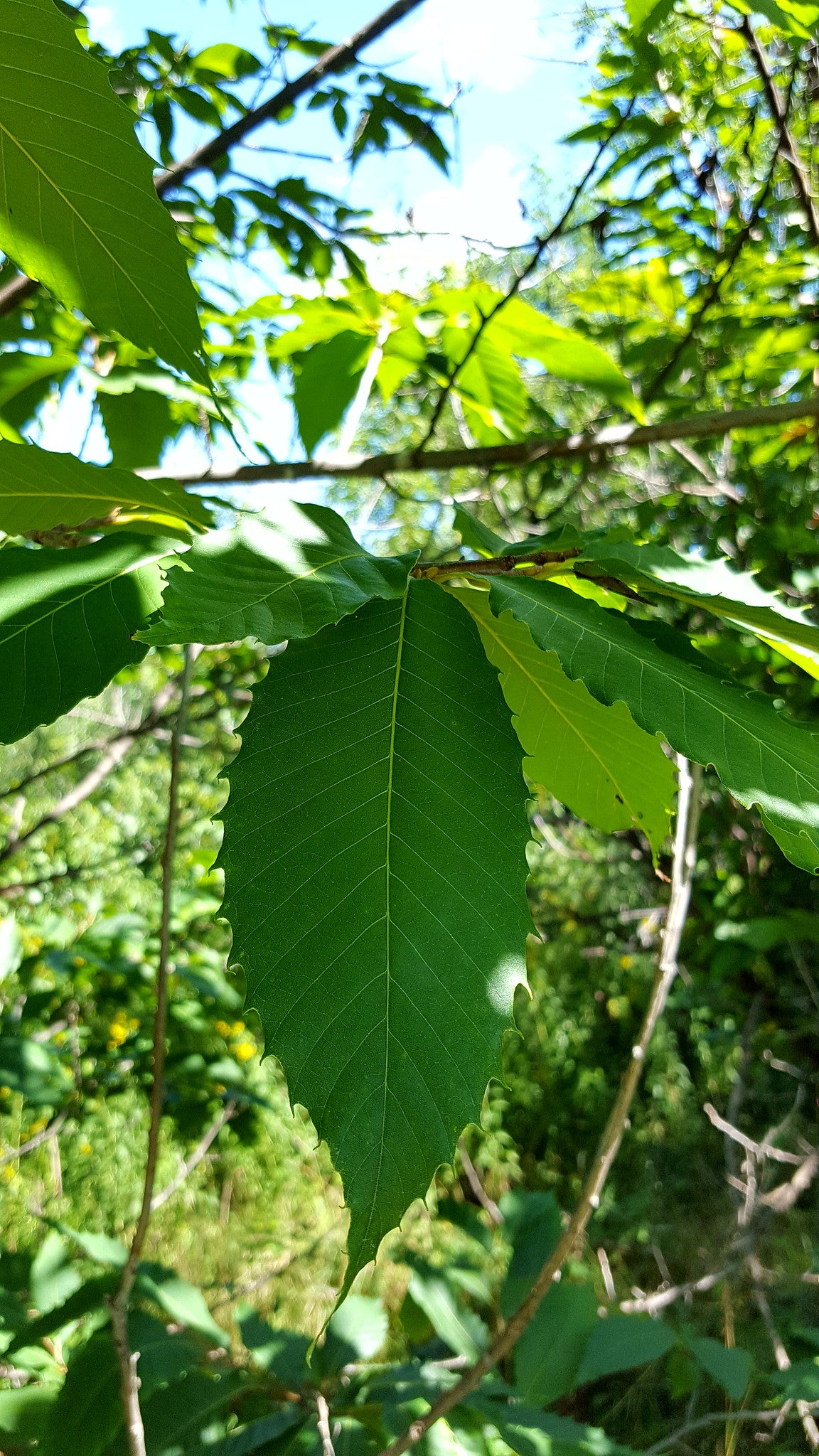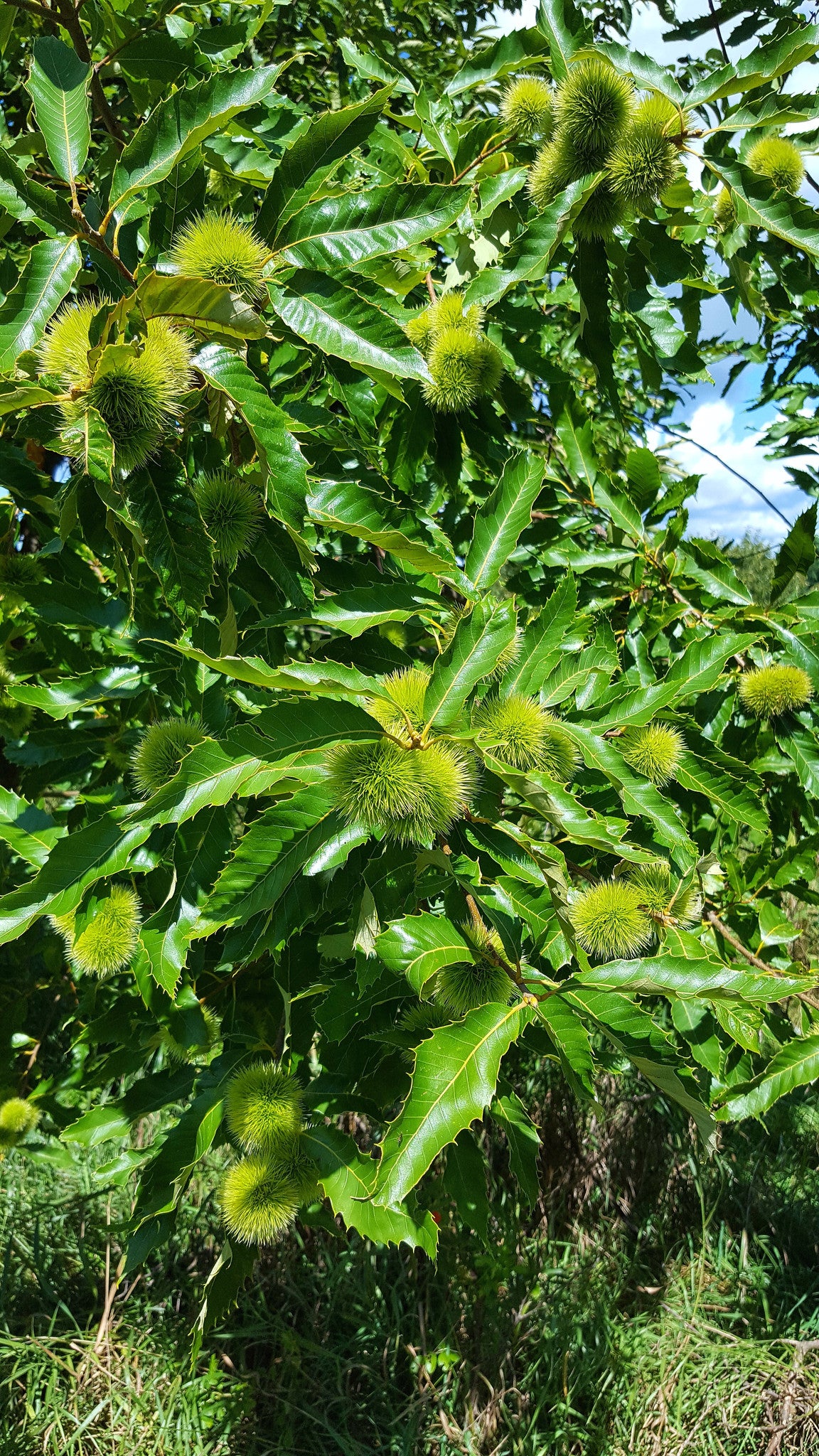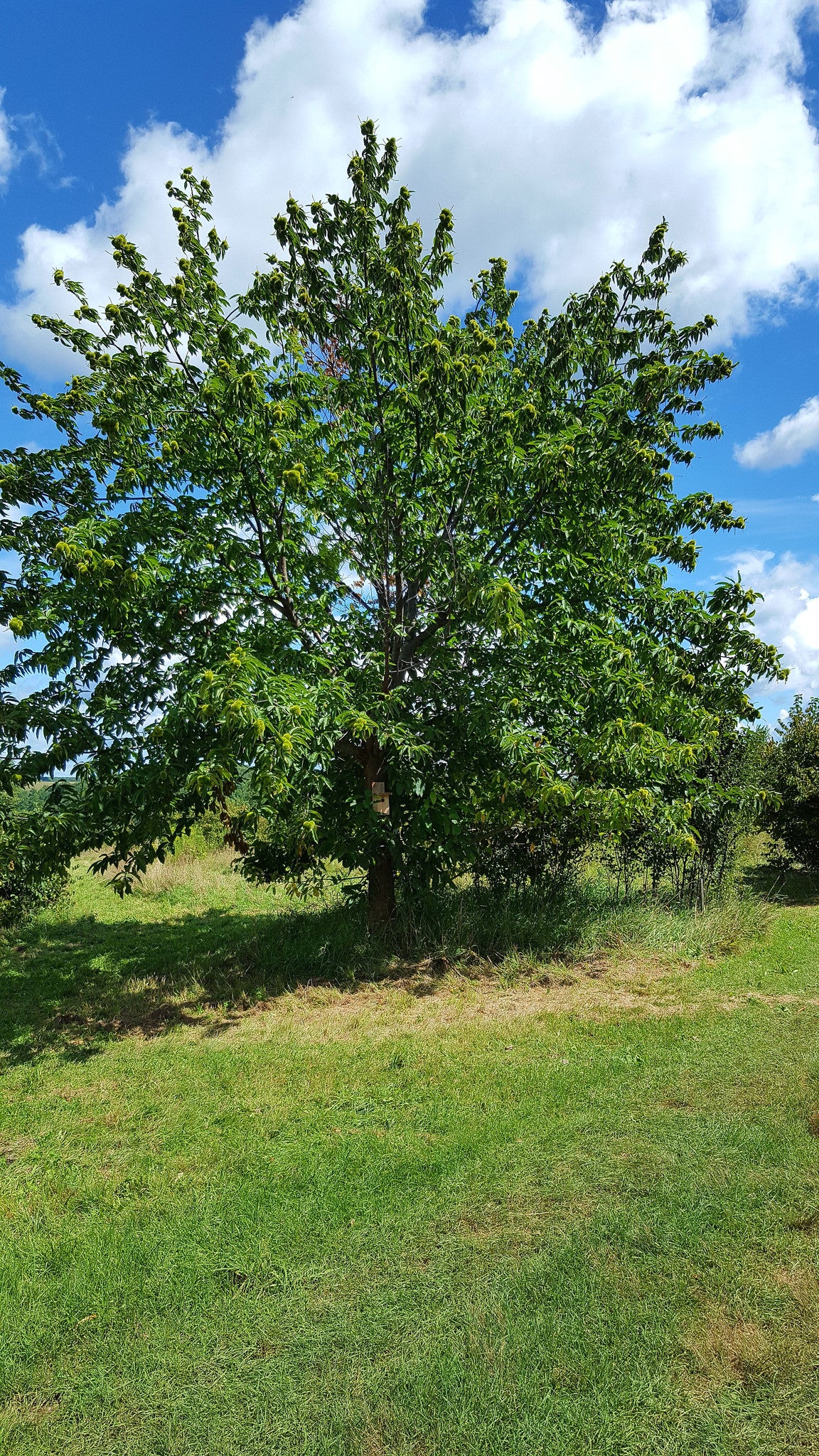forestag
American Chestnut (Castanea dentata)
American Chestnut (Castanea dentata)
Couldn't load pickup availability
Share
The American Chestnut (Castanea dentata) is a historically significant hardwood tree that once dominated the eastern forests of North America. Known for its rapid growth and majestic stature, it can reach heights of up to 150 feet and diameters of 10 feet.
Despite these challenges, planting American Chestnut trees remains an essential step toward restoring this once-prominent species. They are prolific nut producers, with their spiny green burrs typically flowering around the 4th of July and maturing by late summer. Their nuts are an excellent food source for humans and wildlife.
Unfortunately, the species has been nearly wiped out due to chestnut blight, however, our American Chestnut seeds come from blight-free nurseries in Oregon and Washington, ensuring a better chance for growth in regions outside their historic range.
This is an opportunity to help preserve one of America’s most threatened tree species!
Plant Characteristics:
- Scientific Name: Castanea dentata
- Size & Shape: Grows up to 150 feet tall with a diameter of 10 feet; a tall, straight trunk with a broad, rounded crown.
- Fruit Type: Edible nuts enclosed in spiny green burrs.
- Flowering: Typically flowers around the 4th of July; nuts develop through late summer.
- Ecological Benefits: Once an important timber tree, the American Chestnut can help improve soil health, provide shade, and enhance biodiversity in agroforestry systems; supports native wildlife.
- Wildlife Benefits: Nuts are a crucial food source for deer, squirrels, and a variety of birds; the tree offers habitat and nesting sites.
Growing Conditions:
- Sun Requirement: Prefers full sun.
- Water Requirement: Moderate water needs; appreciates well-drained soils.
- Hardiness Zone: Zones 4-8.
- Soil Preference: Thrives in rich, well-drained soils but can adapt to various soil types.
Planting the American Chestnut is not just about adding a beautiful tree to your landscape; it’s a chance to contribute to the conservation of a once-mighty species. With its potential for rapid growth and nut production, this tree is a valuable addition to any sustainable agroforestry project, offering ecological benefits while providing food and habitat for wildlife.
